ABSTRACT
Will large swarms of small robots dominate future military campaigns? We want to challenge that perception. There is a risk that the term swarm is being assumed and applied too generally to any group of autonomous robotic vehicles. Use of the word conjures images of insects, like locusts, following relatively simple, common patterns of behaviour. In science fiction, we see swarms of nanotechnology – insect-like robots – overwhelming defences.
Roke believes that military (and other) use of autonomous technology will be far more sophisticated. It will be squad-based.
Squads will bring diverse autonomous robotic vehicles together to cooperate and meet complex goals. Roke is developing the algorithms, tools and software that enable us to build, task and manage squads. This paper discusses the benefits of squads over swarms and their potential future development. Biologically-inspired swarm behaviour will be just one of many types of autonomy that will be used.
The future will be built on squads.
INTRODUCTION
Autonomous robotic technology will revolutionise the way the military operates. Flexible, resilient, efficient and precise teams of autonomous vehicles will do difficult and dangerous jobs.
Does the future lie with large, homogeneous swarms of robots? We think not. A swarm may make a good light show, but we believe that the future belongs to squads. Squads are heterogeneous groups of autonomous vehicles working in a team with people, digital agents and other sensors. Just like a team of people, these squads will self-organise to solve complex challenges.
In this paper, we argue for the value of squads over swarms and share where we think the future lies. We want to share our ideas and shape future drone research and development. We explore the challenges and opportunities of squad-based systems, how squads could work, and the methods, tools, and software necessary to enable their definition, tasking, and supervision.
For consistency, we will use the term AxV throughout to refer to an Autonomous Vehicle, which could be Airborne (AAV), Surface (ASV – a wheeled, tracked, or legged unit), or Underwater (AUV). We chose this term to be neutral but to emphasise that these robotic devices can act independently.
When we talk about squad members, we mean an AxV, a person, or an autonomous digital agent. Squads may also control and make use of all kinds of other sensors, such as cameras, which may have some level of autonomy (tracking a moving target, for example) but are not fully mobile or don’t have the smarts to be a full squad member.
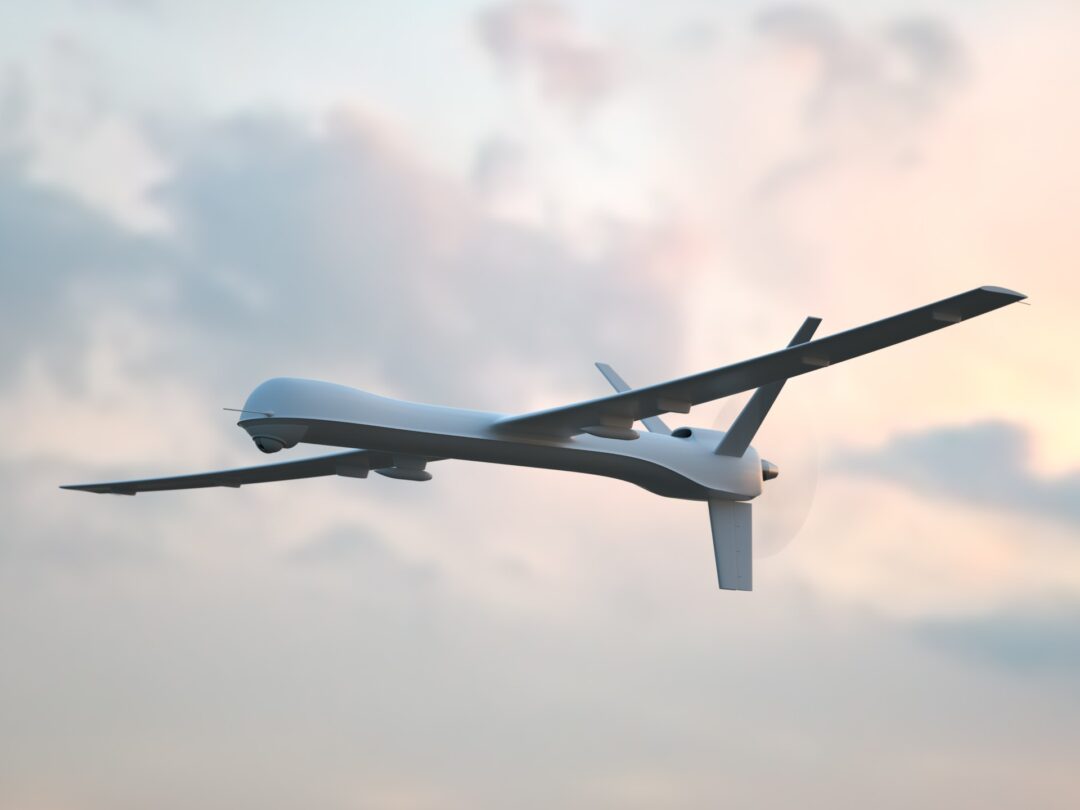


SWARMS VS SQUADS
Biological models often inspire emerging technologies.
We are all sadly familiar with computer viruses. Neural networks take inspiration from how the brain works. Robotic swarms are similarly enticing. Swarms of animals can accomplish tasks that one or two could not. Birds flock for safety: the flock is more likely to spot a predator and makes it harder for a predator to identify a single target. Fire ants form rafts to survive floods. Bees can smother a hornet. We also see squad- like behaviour in nature, in the form of some symbiotic relationships: zebra herds often co-exist with giraffe, the zebra benefitting from the giraffe’s ability to see distant predators, and the giraffe from sharing the risk of being eaten with the zebra.
In science fiction, a swarm of militarised robot insects is seen as almost impossible to defend against. Like a plague of locusts, the swarm overwhelms defences and, however many are destroyed, more keep on coming. We don’t yet have the technology to build, deploy and sustain such swarms. Building devices with the mechanical sophistication of an insect and a useful power source is some way off.
Even when we can create an artificial insect swarm, it will not solve everything.
Small, weaponised drones are proving highly effective in the Ukraine against personnel and vehicles. With careful targeting, a small explosive in the right place can have a big effect – psychological, as well as physical. This conflict is changing our perception of the use of drones. Even so, these are uncrewed vehicles and have no or limited autonomy (for example, waypoint following). They can’t be considered as a swarm and need a controller to fly or give them detailed instructions. Useful, yes, but we believe that far more could be done with far less direct human control.
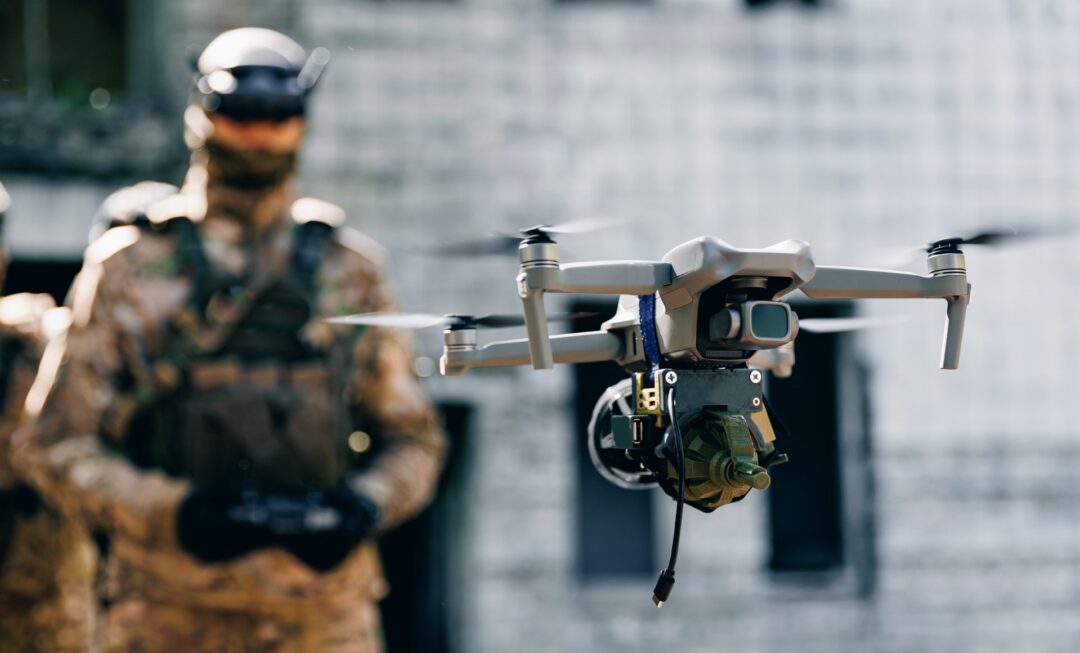
Larger, more capable (military) drones have been used in conflicts from Afghanistan to Ukraine. Again, these drones are reliant on human operators, which limits their use and our ability to use them at scale. A swarm, then, is a group of interchangeable uncrewed vehicles all following the same programmed behaviour. Simple programmed behaviour can give rise to surprisingly complex emergent behaviour, as we see with creatures like ants. There is clearly a place for swarms in the autonomous future. A swarm of autonomous artificial fish could efficiently search a river, for example. Swarms scale easily and can easily survive the loss of individual members.
When tasks get more complex, swarms will show their limitations. This is where squads take over. People have different specialisms. We wouldn’t field a football team of all strikers or all defenders. In the same way, we will have AxVs with different abilities and specialisms. A squad harnesses the mix of skills that are available to work together in a coordinated way – alongside humans and digital agents – to deal with more complex situations.
Imagine a situation where we needed to survey a nuclear processing site following a natural disaster. Could a swarm help? To a point. We can easily imagine a swarm of vehicles fanning out across the area and reporting back radiation measurements. Each vehicle has the same sensors and follows the same, pre-defined behaviours – in this case designed to make sure that they carry out an effective and comprehensive search. If a vehicle is damaged or becomes stuck, the swarm adapts and carries on, completing the task.
A squad can be more effective and has the scope to do far more. If we assume access to a mix of airborne, ground (wheeled or tracked) and four- legged squad members we gain flexibility. The airborne assets can stand off from the radiation risk and use cameras and (perhaps) radiation sensors to survey at range. Based on places where damage is seen, wheeled vehicles will autonomously explore and map these regions. Specialist AGVs can retrieve samples for further investigation, perhaps directed by video feeds from an AAV. Hardened AxVs will choose to explore the more hazardous areas. If the damage has caused obstacles that would stop a wheeled vehicle, the squad is able to use four-legged or airborne squad members to get past the obstacle.
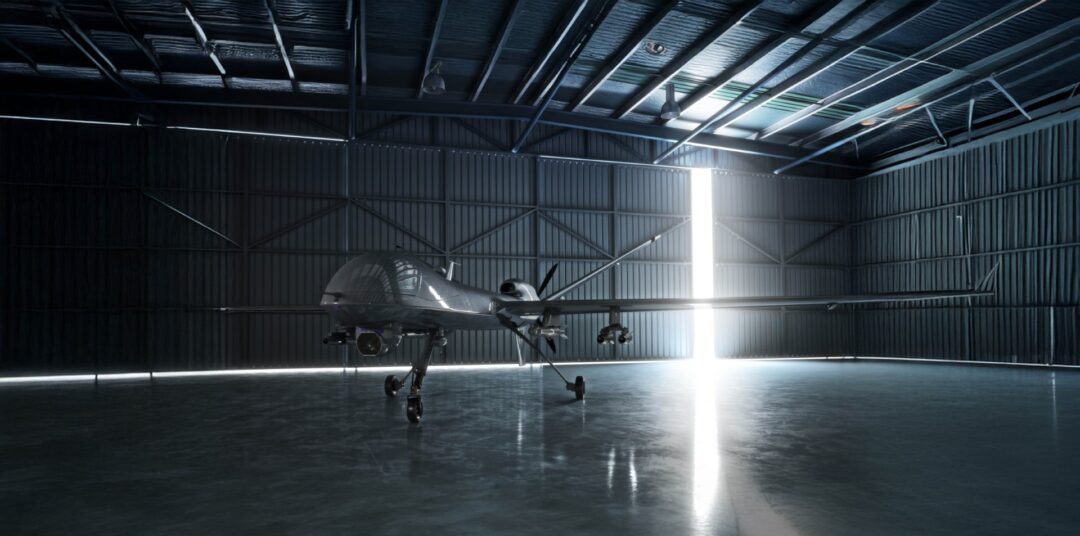
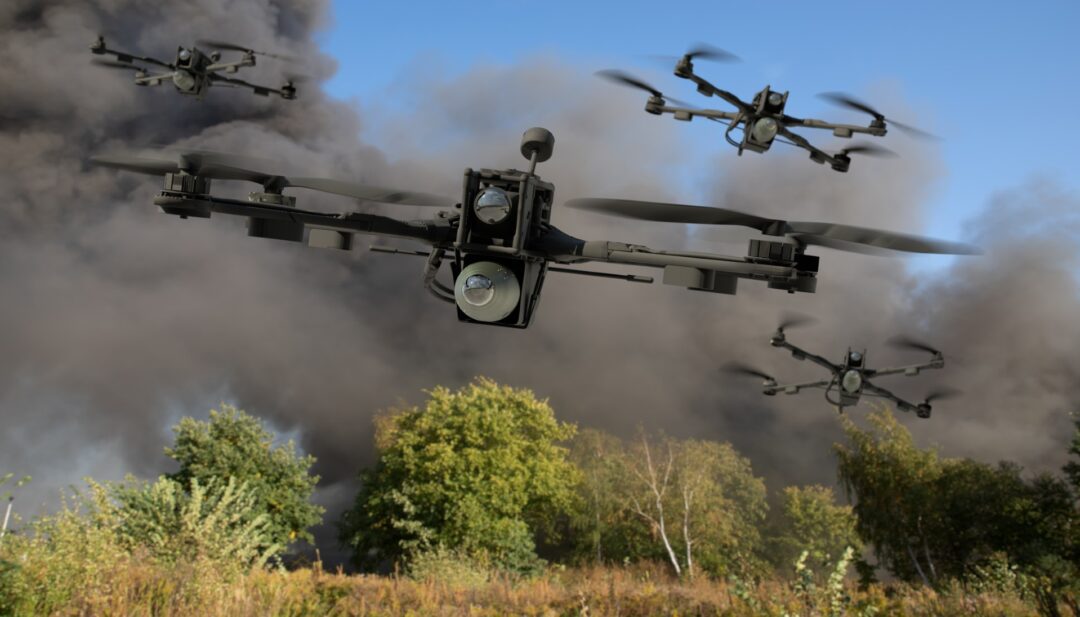
All of this happens under the general direction of human controllers, but with a mix of centralised and distributed decision making to allow the squad to be seen as a partner, rather than a tool. Indeed, a squad member should ask for human assistance where needed (human-in-the-loop). This goes far beyond what a swarm could realistically achieve.
Swarms are characterised by homogeneity. Swarm members are interchangeable: they look the same and act the same. Swarms are a triumph of emergence.
Squads are characterised by heterogeneity. Squads use diversity in squad members to mimic human teamwork. Squads elevate AxVs to intelligent peers working alongside humans and autonomous digital agents.
Some members of a squad could choose to swarm to search an area, for example. It is always open to a squad to make use of swarm behaviours. A swarm will never achieve the sophistication of a squad.
OVERCOMING CURRENT TECHNOLOGY LIMITS
Squad members can specialise and cooperate; indeed, this is central to the squad concept.
-
Specialisation encourages optimisation, reducing both cost and power consumption: squad members don’t have to be interchangeable, so not all members need a high-resolution, high-power,
high-cost LiDAR, for example -
Effective cooperation ensures that specialist squad members are kept back for when they can be most useful, reducing their energy consumption.
-
Squad members can use different communications technologies (terrestrial radio, satellite, laser, etc.). Squad members with multiple communications technologies can act as gateways, so we can build hybrid networks to mix local and over-the-horizon communications. Or a squad member may be able to act as a base station to facilitate particular types of local communications.
-
A squad member could specialise in high-power data processing, relieving other squad members of the processing burden and reducing the number of expensive processors needed, while reducing bandwidth requirements in reporting back to the control centre.
-
Squads inherently use members with contrasting functions: it’s not easy to design a swarm that can combine flight and underwater exploration, but a squad would simply include a mix of airborne and underwater-capable members.
-
As a tanker aircraft supports fighters, so a squad could include AGVs dedicated to recharging other squad members.
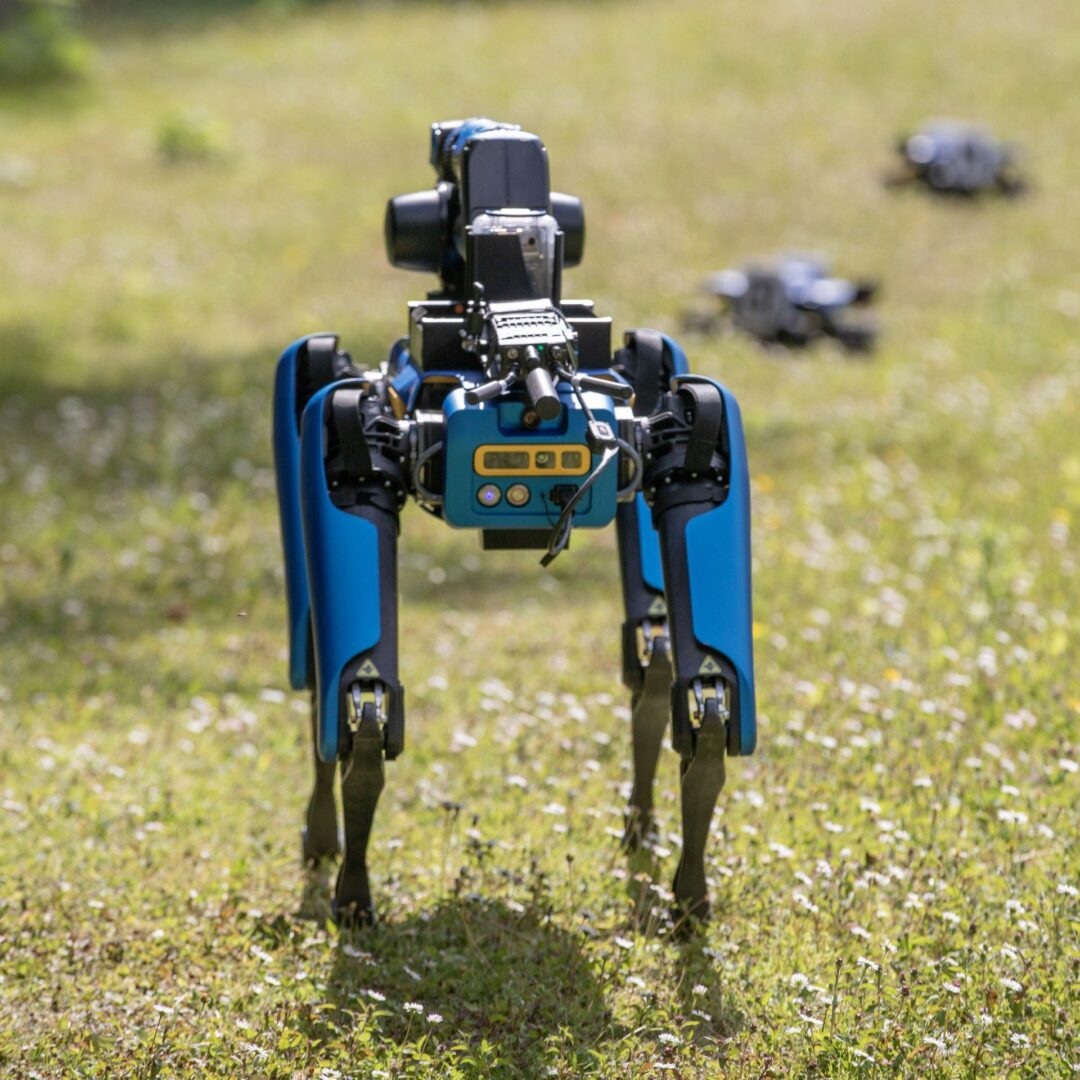

ARCHITECTURAL CONSIDERATIONS
A squad is quite different from a swarm, as we have seen. That suggests that we will need to think differently about how to build a squad. What might that mean?
The homogeneity of the swarm model is attractive. Creating a single type of AxV that, deployed in large numbers, can solve a problem through emergent behaviour is both elegant and simple. Swarms are inherently robust, as they continue to operate if arbitrary individuals are removed. Tasking a swarm is also relatively simple: there is no concept of tasking an individual, only the swarm. The jobs that a swarm can do are also relatively limited and that dictates the sophistication of any task definition given to a swarm.
We assume that control during the operation of the swarm is limited, in some cases to little more than the ability to abort the mission. The swarm is also assumed to operate within well-defined boundaries to avoid the swarm behaviour running out of control (for example, being limited to a clear geographical region).
Squads are designed to take on more complex tasks. This comes with a need for greater and better autonomy, not least to avoid overloading the human. If we imagine a squad of uncrewed, piloted vehicles, we have just created a telepresence system.
Useful, perhaps, in dealing with hazardous environments, but tying a human to every vehicle creates a lot of hard communication requirements and does not scale. A big challenge is to mix autonomy with the right command and control structure. How do we make sure that the squad is able to blend robotic and human team members, sharing information and cooperating effectively?
Squads might vary in their needs.
In some cases, high bandwidth, real-time communication might be essential. In other cases, limited telemetry will be plenty. Peer-to-peer communications will be essential for coordination in some situations – in others, AxVs will be able to rely on centralised information sharing or even just visual cues to work.
Modularity is part of the squad concept. That comes with challenges, particularly when that modularity needs to encompass a diverse set of squad members (including ones that haven’t been thought of, yet).
Squad members with quite different suites of sensors and abilities will need to be able to communicate and exchange information. They will need to distinguish between processed sensor data (“there’s a person at this location”) and raw sensor data (“here’s a video feed”), with the need to agree formats that this implies.
Some of these communications might be direct, but many won’t be – not all AxVs will have the same communications systems. Getting the communication stack right will help ease the integration of new squad members.
Overall, we believe that defining a modular structure for management, communication and decision making is important to making squads a reality. We expect the structure to support hierarchical squad structures. That allows us to think about squads as team members in a bigger structure. Aggregation is analogous to the military command hierarchy: it won’t apply in all cases but is an important way to build scalability into the system.
We need to not ignore the human squad members. Human machine teaming is assumed. It is not enough to think about the AxVs which will communicate and coordinate with each other. They need to communicate and cooperate with humans.
What interfaces will enable that? Visualisations and traditional interfaces as well as virtual or augmented reality will surely have a role to play, but so will others. Speech. Touch. Vision. All are natural ways that we understand what our peers our doing and we expect squads will work the same way. A human squad member should be able to point at an object of interest and verbally task another non-human squad member to investigate it.
Squads are great for tackling sophisticated tasks where flexible coordination and communication are critical. Swarms will still be used where homogeneity and simplicity are a good fit. Squads need an architecture that supports self-organisation and a command and control model that suits the task at hand.
COMMAND & CONTROL
Developing an effective command and control (C2) environment for squads involves several key considerations:
-
Communication
How do we ensure effective communication that can support the squad members and securely handle the different types of communications that are likely, from low-latency to delay-tolerant, from high-bandwidth to extremely bandwidth constrained?
-
Coordination
Effective and flexible coordination mechanisms are needed. We will need to develop algorithms and protocols that can share tasks, resources, and responsibilities among the different squad members, in real-time.
-
Autonomy
The squad members have to be autonomous, able to take responsibility for managing themselves and fulfilling tasks as part of the coordinated squad operation.
-
Teaming
AxVs in the squad need to be able to work seamlessly with human squad members and link more widely to other teams and C2 structures. They need to be able to do this without overloading the human team members: no-one will want to work with a squad that needs a constant stream of instructions.
-
Redundancy
Swarms are inherently resilient, but squads need to be able to define and manage redundancy to provide an appropriate level of resilience.
-
Scalability
The squad needs flexibility in the C2 system to accommodate distinct types of sensors, AxVs, and agents. A squad must be easily reconfigured to adapt to changing mission requirements.
The C2 function is responsible for managing the squad, collecting and aggregating data, and supporting decision making. Within this overall control, individual squad members will act independently for periods, working within the overall plan. This gives greater flexibility and adaptability; individual AxVs can react to changing conditions or unexpected situations. If the change is big enough, this will ripple up to affect the whole squad.
Developing an effective C2 environment for squads brings unique challenges and opportunities. There isn’t necessarily one approach to suit all circumstances. We focus on communication, coordination, autonomy, teaming, redundancy, and scalability, to create a system that can effectively coordinate the activities of a squad to achieve a common goal.
SQUAD FORMATION
Squads could be formed in different ways, depending on the needs of the mission or task.
- Centralised authority: someone, like a military command or a civil agency, assigns tasks to squads based on a squad’s fit to the task and availability. That might need to take account of factors like location (of the task and the squad), compatibility between squad members, and the availability of human team members. It could involve bidding for resources, negotiating with other squads to exchange assets, or collaborating across multiple squads.
- Self-organisation: based on the mission requirements, a nominated squad leader or distributed coordination function could identify the necessary capabilities and AxVs needed. The squad would self- organise from the pool of available assets.
This might involve negotiation with a central authority to secure the right resources.
The approach to forming squads would depend on the specific context and goals of the operation, as well as the availability and compatibility of different AxVs and other resources. We think that a mix of top-down and self-organisation seems most likely. We can imagine sending a mix of AxVs to deal with a situation, based on what we think they will face.
When they arrive, the AxVs will self-organise into squads to deal with the highest priority goals that they have been set. A central authority can then manage the set of goals and priorities and confirm or override squad allocations. Regardless of the model, squad members need to be able to specify and communicate what capabilities they can offer. Squads need to be able to relate these capabilities to the overall mission objectives. This supports the overall approach to planning.
THE APPLICATION OF SQUADS
Part of the attraction of squads is their wide applicability. Here are just some of the places where squads could be applied:
- Search & Rescue
- Surveillance
- Deception
- Effects
- Logistics
In all of these applications, the motivation for using squads will depend on a variety of factors: What does the application need?, What members are available, and what can they do.
The development of an effective squad architecture will grow from a deep understanding of these factors. That will help integrate a variety of different technologies and systems into a cohesive whole.
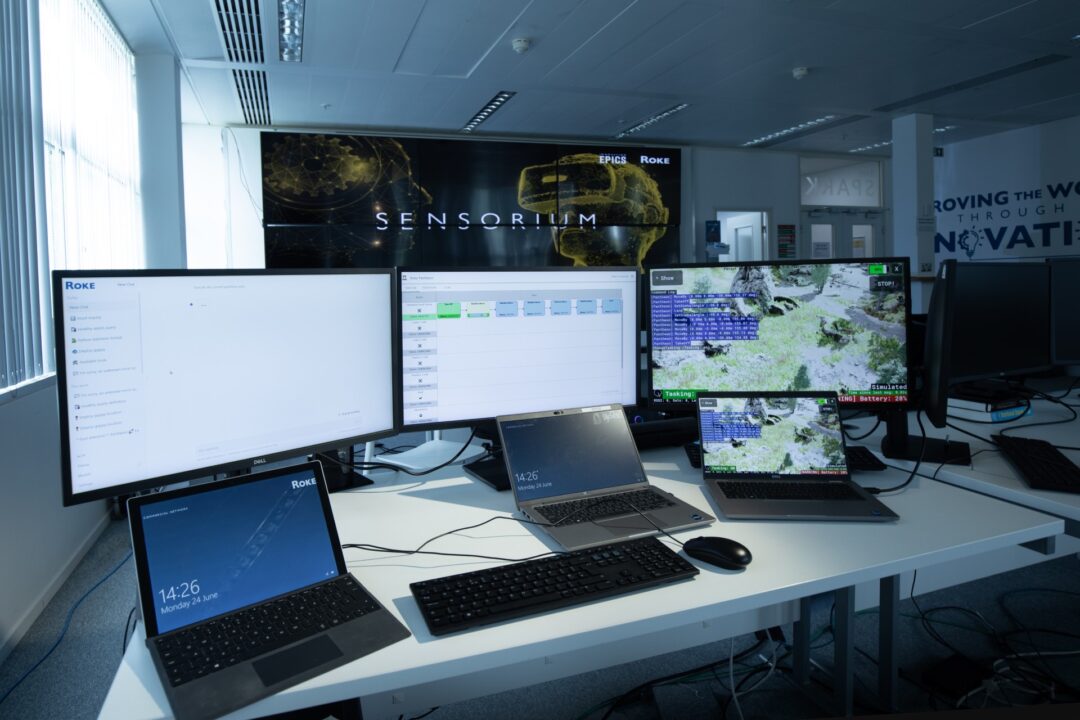
HOW ROKE IS WORKING WITH SQUADS
Roke is actively exploring and developing the concept of squads.
We can demonstrate many of the concepts through our command and control centre, the Sensorium. One building block is Roke’s Autonomous Systems control software.
It manages surveillance by applying information theory to minimise uncertainty in the area being monitored. It makes use of Dstl’s SAPIENT (Sensing for Asset Protection with Integrated Electronic Networked Technology) standard for integrating sensors with Artificial Intelligence. Autonomous Systems also illustrates how different algorithms can be useful. Machine learning can be combined with other statistical approaches to great effect.
We are integrating multiple AxVs to further develop the squad concept. Our squad currently includes off-the-shelf AGVs, some suited to military operations, and low-cost AGVs built from a modified remote-control cars and using open-source robotics software and frameworks. Multiple types of UAV are included and linked into Autonomous Systems, with future work to integrate AAVs. Roke’s Electronic Warfare products (LOCATE and RESOLVE) are integrated alongside fixed pan- tilt-zoom cameras to create a representative environment within the grounds of Roke Manor. This is the basis for our real-world experimentation and development.
We also make use of digital twins and simulation environments. These make it possible to experiment with a wider array of AxVs in vastly different environments. Simulation can also be done at a scale that would be expensive to replicate in the real world.
Squad autonomy is an ideal challenge for Roke. It brings together our expertise in sensors, AI and machine learning, and communications. In future, we can build and test new sensor capabilities into our development platform. We can also experiment with advances in AI and ML, looking at how we can give squads even greater autonomy. Alongside autonomy, we want to build more robust, adaptable squads with better teamworking skills.
There is also substantial scope for better sensor fusion, data analytics and more effective visualisations. These are all areas of active research. To improve overall decision-making, we are also looking at fusing sensor data with open-source data. Some of that data is collected by autonomous digital agents: software agents that can be tasked alongside AxVs so that a squad can be present in both the physical and digital world.
Further out, we can imagine squads that are capable of learning and adapting over time. How can squads use ML techniques to continually improve their performance and effectiveness, while maintaining trust and operating in a safe and ethical manner.
Autonomous squads are part of Roke’s plan for the future. We are developing better and more capable squads. That gives focus to our work in AI, ML, sensors, communications, data science, software, systems engineering, cyber security and human science. We want our work to revolutionize the way that we use AxVs.
This work is led by the Innovation Team, a group within Roke that focuses on innovative solutions to complex problems. The whole company is involved in innovation and we draw on all the engineering skills within the business as part of this work. The Innovation Team is dedicated to researching and developing new technologies, exploring emerging trends, and providing strategic advice and support to Roke’s clients. Roke is a UK-based technology and engineering company, part of the global Chemring Group. Our customers are government agencies and businesses, throughout the world.
AxV technology is evolving all the time.
We have explained why we think the squad is the right model for thinking about how to harness the power of AxVs. Our view is backed by our ongoing research and development into squads. AxVs are part of our future: that future will be built on squads.
If you would like to learn more about our work in this important area, please contact [email protected]

Omi Ducat
Chief Marketing Officer
